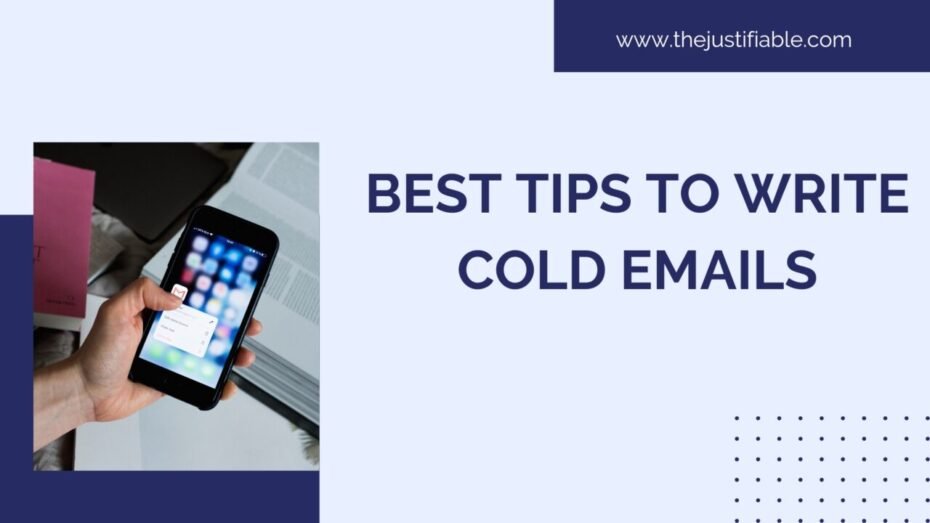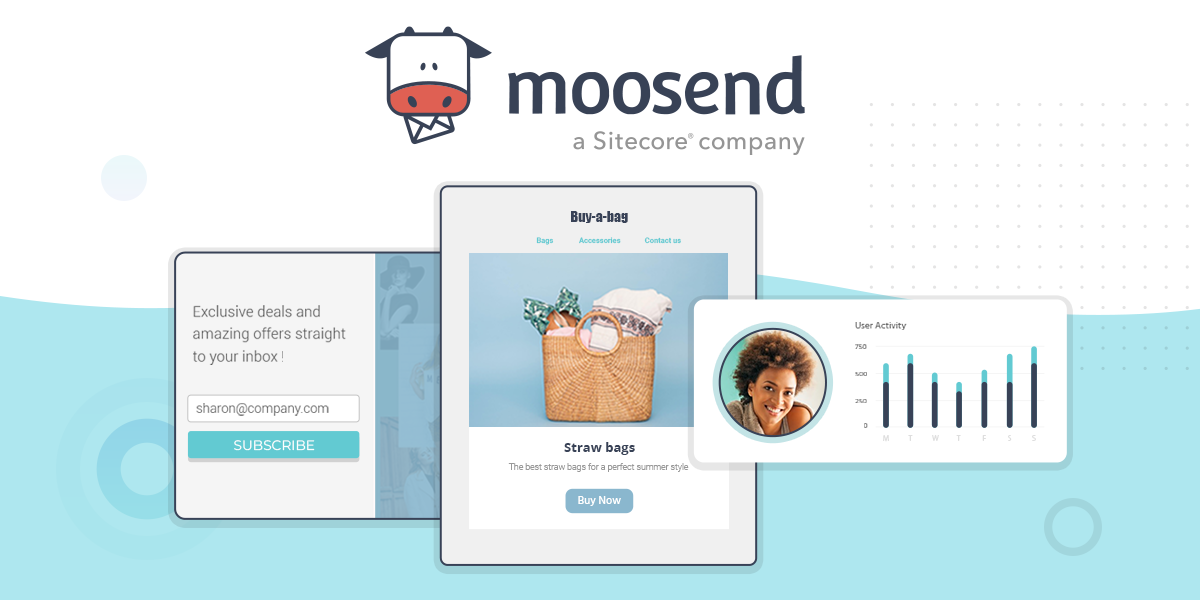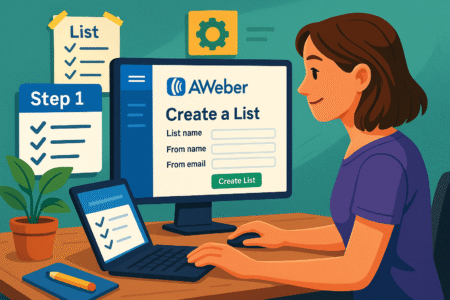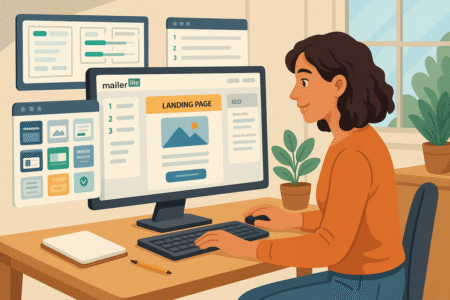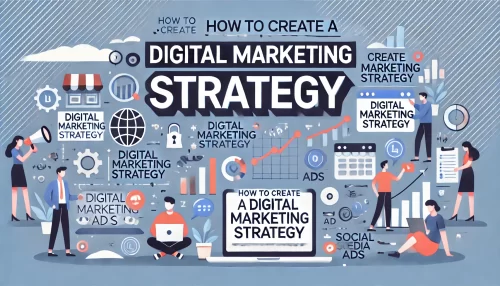Table of Contents
Are your cold emails falling flat, leaving you wondering what went wrong? Crafting the perfect cold email can seem daunting, but with the right tips, you can turn your messages into powerful tools for connecting with prospects. In this guide, we’ll explore the best tips to write cold emails that not only grab attention but also drive results.
Mastering the Fundamentals of Cold Emails
Mastering the fundamentals of cold emails is crucial for anyone looking to make meaningful connections and generate new opportunities. Understanding what makes a cold email effective can significantly increase your chances of getting the desired response. Cold emails are more than just an introduction; they are your first impression, a chance to grab attention, and an opportunity to convey your value proposition.
To truly excel in crafting cold emails, it’s important to start with the basics. This involves understanding the purpose behind your outreach, knowing who you are targeting, and setting clear objectives for each email. When these elements are aligned, your cold emails become more than just another message in someone’s inbox—they become powerful tools for building relationships and driving results.
Email Marketing Recommendations
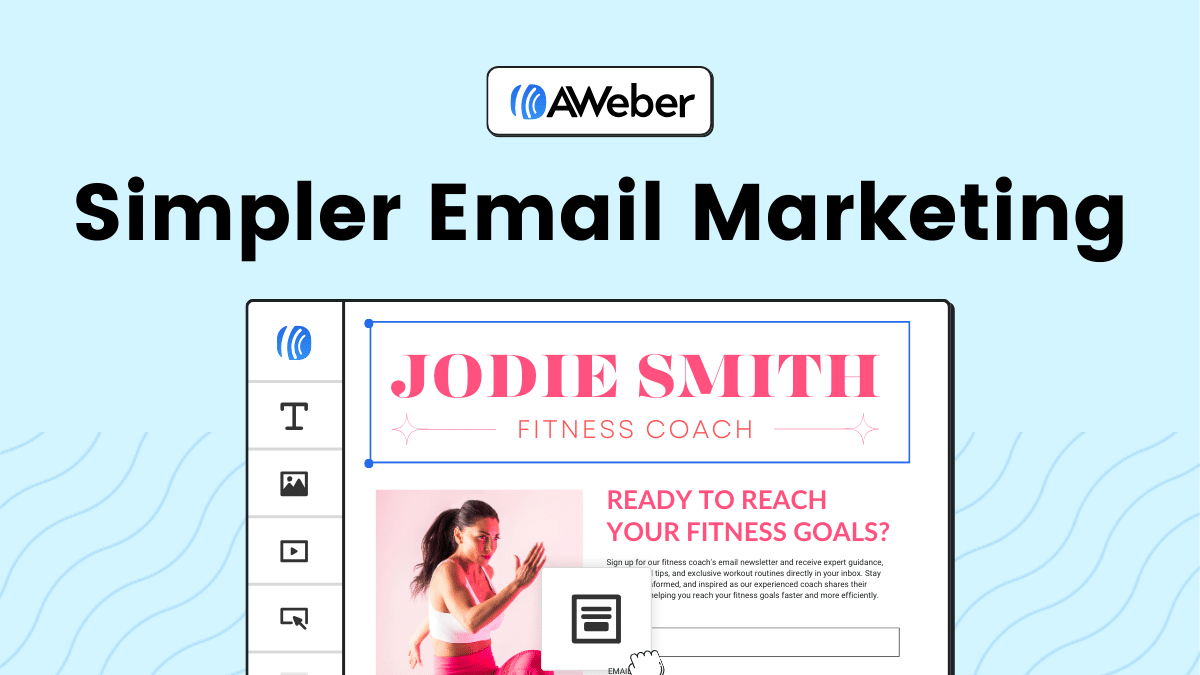 Aweber
| 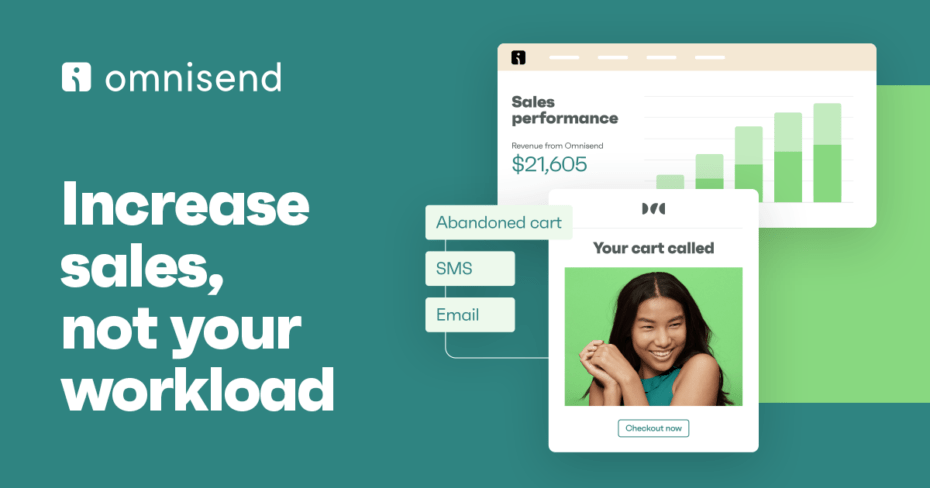 Omnisend
| 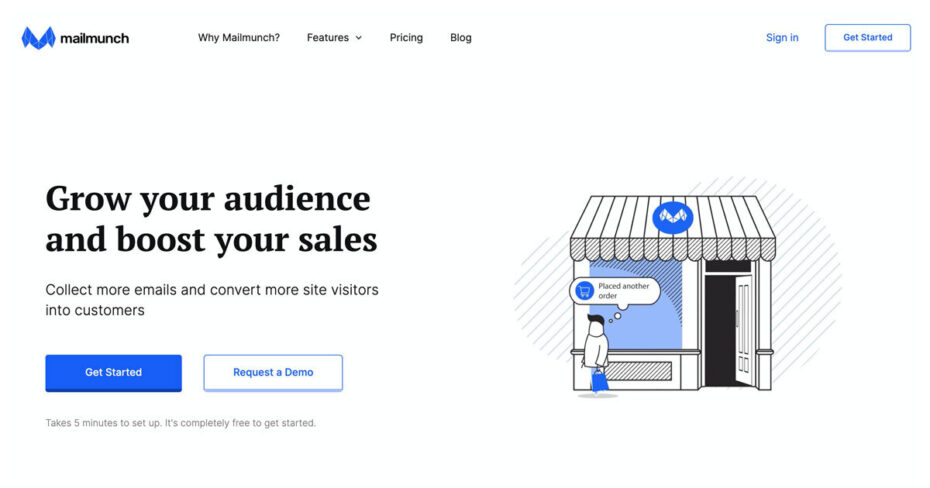 Mailmunch
|
Understanding the Purpose of Cold Emails
The purpose of cold emails goes beyond simply making contact; it’s about creating a connection that leads to a meaningful interaction. Whether you’re reaching out for a business opportunity, networking, or promoting a product or service, your cold email should be laser-focused on delivering value to the recipient. Understanding this purpose allows you to tailor your message in a way that resonates with the reader and increases the likelihood of a positive response.
When writing a cold email, think about what the recipient stands to gain from your message. Are you offering a solution to a problem they might be facing? Are you providing information that could help them achieve their goals? Whatever the purpose, ensure that it’s clearly communicated in your email. This clarity not only helps in grabbing attention but also in establishing a strong foundation for further communication.
In addition, recognizing the purpose of your cold emails helps you stay focused and avoid unnecessary fluff. Every sentence should contribute to your overall goal, whether it’s generating leads, securing a meeting, or simply starting a conversation. With a clear purpose in mind, your cold emails will be more effective and impactful.
Finally, always keep in mind that your cold emails should be about the recipient, not just about you or your business. Tailor your message to address their needs and concerns, making it clear why they should take the time to engage with your email. By doing so, you’ll significantly increase your chances of achieving the desired outcome.
Identifying Your Target Audience
Identifying your target audience is a critical step in the cold email process. Without a clear understanding of who you’re trying to reach, your efforts are likely to miss the mark. Knowing your audience allows you to tailor your message to their specific needs, pain points, and interests, making your cold emails more relevant and persuasive.
Start by defining the characteristics of your ideal recipient. What industry do they work in? What role do they hold within their organization? What challenges are they likely facing that your product or service can address? The more detailed your understanding of your target audience, the better equipped you’ll be to craft an email that resonates with them.
Once you’ve identified your target audience, the next step is to segment them into smaller, more specific groups. This segmentation allows you to further personalize your emails, increasing the likelihood of a positive response. For example, you might tailor your messaging differently for decision-makers versus influencers within a company. Each segment may have different priorities, and your emails should reflect that.
Another important aspect of identifying your target audience is understanding where they are in their buyer’s journey. Are they just becoming aware of a problem, or are they actively seeking a solution? Tailoring your message to align with their current stage can significantly improve your cold email’s effectiveness. If you’re reaching out to someone who is already considering solutions, for example, highlighting the specific benefits of your offering can be particularly impactful.
Finally, always keep your audience’s perspective in mind. Write your cold emails as if you were in their shoes, thinking about what would catch your attention and compel you to respond. This empathetic approach not only helps in crafting a more engaging message but also demonstrates that you’ve taken the time to understand their needs, which can go a long way in building rapport.
Defining Clear Objectives for Your Cold Emails
Defining clear objectives is essential for crafting effective cold emails. Without a specific goal in mind, your emails are likely to be unfocused and less impactful. Whether your objective is to schedule a meeting, secure a call, or simply open the door for further communication, having a clear target helps you shape your message accordingly.
Start by asking yourself what you want to achieve with each cold email. Is it to introduce your business? Generate a lead? Set up a demo? The more specific your objective, the easier it will be to create a message that drives action. A well-defined goal also helps you measure the success of your cold emails, allowing you to refine your approach over time.
Once you’ve established your primary objective, consider breaking it down into smaller, more manageable steps. For example, if your ultimate goal is to secure a partnership, your initial objective might be to simply start a conversation or set up an introductory meeting. By focusing on these smaller goals, you can create a more natural progression that leads to your larger objective.
It’s also important to ensure that your objectives align with the needs and interests of your recipient. If your goal is too self-serving, it may come across as pushy or irrelevant. Instead, frame your objective in a way that highlights the value to the recipient, making it clear why they should take the next step. For example, instead of asking for a meeting, you might offer to share insights or solutions that could help them overcome a specific challenge.
Finally, be concise and direct about your objectives. Make it easy for the recipient to understand what you’re asking and how they can respond. This clarity not only helps in getting the desired response but also demonstrates professionalism and respect for the recipient’s time. With clear objectives guiding your cold emails, you’ll be well on your way to achieving your desired outcomes.
Crafting Compelling Subject Lines for Cold Emails
Crafting compelling subject lines is one of the most critical aspects of writing effective cold emails. The subject line is the first thing your recipient sees, and it plays a huge role in whether your email gets opened or ignored. A well-crafted subject line can spark curiosity, build anticipation, and set the tone for the rest of your email, increasing your chances of engagement.
To create subject lines that stand out, it’s essential to strike a balance between being intriguing and relevant. Your subject line should offer a glimpse of what the email is about while piquing the recipient’s interest enough to make them want to learn more. Incorporating elements like power words, personalization, and a clear value proposition can make your subject lines more compelling and effective.
Using Power Words to Increase Open Rates
Power words are emotionally charged terms that can significantly impact the effectiveness of your cold email subject lines. These words evoke curiosity, urgency, and a sense of importance, making the recipient more likely to open your email. Examples of power words include “exclusive,” “limited,” “discover,” and “unlock.” When used strategically, these words can make your subject line more enticing and hard to ignore.
However, it’s important to use power words naturally and sparingly. Overloading your subject line with too many power words can come off as spammy and reduce your email’s credibility. Instead, focus on incorporating one or two power words that align with the overall message of your email. For instance, if you’re offering a unique solution to a problem, using words like “exclusive” or “discover” can highlight the value of what you’re offering.
In addition to choosing the right power words, placement within the subject line is key. Placing power words towards the beginning of the subject line can immediately grab attention, while using them at the end can create a strong finish that encourages the recipient to open the email. Experiment with different placements to see what resonates best with your audience.
Finally, while power words are important, they should complement, not overshadow, the core message of your subject line. The ultimate goal is to create a subject line that is both compelling and relevant to the recipient, ensuring that your cold emails are opened and read with interest.
The Importance of Personalization in Subject Lines
Personalization in subject lines is a powerful technique that can significantly boost open rates for your cold emails. When recipients see their name or a detail specific to them in the subject line, they are more likely to feel that the email was crafted specifically for them, which increases the likelihood of them opening it. Personalized subject lines create a connection right from the start, making your email stand out from the generic messages flooding their inbox.
One way to personalize subject lines is by including the recipient’s name. For example, a subject line like “John, Discover Solutions Tailored for Your Business” immediately catches the reader’s attention and suggests that the email content will be relevant to them. Another approach is to reference something specific to the recipient, such as their company name, a recent achievement, or an industry trend. This level of personalization demonstrates that you’ve done your homework and that your email isn’t just a mass send.
Beyond just names and specific details, personalization can also involve segmenting your audience based on their preferences, behaviors, or needs. By tailoring your subject lines to reflect the interests or challenges of each segment, you increase the relevance of your email, making it more likely to be opened. For instance, a subject line like “How to Overcome [Industry Challenge]” speaks directly to the recipient’s pain points, showing that your email offers potential value.
It’s also important to ensure that the personalization in your subject line is accurate and relevant. Incorrect or irrelevant personalization can do more harm than good, leading to mistrust or frustration. Double-checking your data before sending out personalized cold emails can help maintain the credibility and effectiveness of your outreach.
Testing and Refining Your Subject Lines
Testing and refining your subject lines is a crucial step in optimizing the effectiveness of your cold emails. Even small changes in wording, length, or structure can significantly impact open rates, so it’s essential to experiment with different variations to see what works best for your audience. A/B testing is a common method used to compare different subject lines and determine which one performs better.
To start, select a small portion of your email list and send two versions of your email, each with a different subject line. Monitor the open rates for each version to see which one resonates more with your audience. For example, you might test a straightforward subject line against one with a power word or a personalized subject line against a more general one. The insights gained from these tests can help you refine your approach for future emails.
Another aspect to consider is the length of your subject lines. Shorter subject lines tend to perform better on mobile devices, where screen space is limited. However, longer subject lines can sometimes provide more context and intrigue. Testing different lengths will help you find the right balance between being concise and providing enough information to entice the reader.
It’s also important to regularly revisit and refine your subject lines based on performance data. Trends and recipient preferences can change over time, so what worked well in the past may not be as effective in the future. Continuously analyzing open rates and experimenting with new approaches will help you stay ahead of the curve and maintain high engagement levels with your cold emails.
Lastly, while testing is important, avoid overcomplicating the process. Focus on one variable at a time, whether it’s the use of a power word, personalization, or length. This will make it easier to identify what’s driving the results and apply those insights to future cold email campaigns, ultimately leading to better performance and higher open rates.
Writing a Strong Opening for Cold Emails
Writing a strong opening for cold emails is crucial in capturing your recipient’s attention and setting the tone for the rest of your message. The first few lines of your email can make or break the interaction, determining whether the reader will continue reading or move on to the next message in their inbox. A well-crafted opening should be engaging, relevant, and immediately convey the value you bring to the table.
To create an effective opening, it’s important to be concise while making an impact. Your introduction should quickly address why you’re reaching out and hint at the benefits the recipient can expect from continuing to read. By focusing on the recipient’s needs and interests right from the start, you set the stage for a more meaningful and productive conversation.
Grabbing Attention Right from the Start
The first sentence of your cold email needs to grab attention and compel the reader to keep going. This can be achieved through various techniques, such as asking a thought-provoking question, presenting a surprising statistic, or referencing a mutual connection. The goal is to immediately engage the recipient and make them curious about what follows.
One effective way to grab attention is by addressing a pain point the recipient is likely experiencing. For example, if you know that your target audience struggles with a specific challenge, you can start your email by acknowledging that issue. This not only shows that you understand their situation but also sets the stage for you to offer a potential solution later in the email.
Another approach is to personalize the opening line based on something specific about the recipient. This could be a recent achievement, a company milestone, or even a shared interest. Personalization demonstrates that your email isn’t just a generic message but rather something crafted with the recipient in mind, which can significantly increase their interest in what you have to say.
Finally, consider the tone of your opening sentence. It should be conversational and friendly, making the reader feel like they’re engaging with a real person rather than a faceless entity. This human touch can make your cold email stand out and encourage the recipient to continue reading, increasing the chances of a positive response.
Establishing Credibility in the First Sentence
Establishing credibility in your cold email’s opening is essential to gaining the recipient’s trust and encouraging them to engage with your message. Without credibility, your email may be dismissed as just another solicitation. The key is to quickly convey why you’re worth listening to and how your experience or expertise can benefit the recipient.
One effective way to establish credibility is by mentioning a mutual connection or a well-known client you’ve worked with. For example, starting your email with, “I recently helped [Reputable Company] achieve [Specific Result] and thought you might be interested,” immediately signals that you have a proven track record. This not only builds trust but also piques the recipient’s curiosity about how you might be able to help them as well.
Another approach is to reference relevant industry knowledge or insights. Demonstrating that you understand the recipient’s business landscape can position you as a knowledgeable resource. For example, you might start with, “Given the recent trends in [Industry], many companies are struggling with [Specific Challenge].” This shows that you are not only aware of the recipient’s context but are also equipped to offer valuable insights or solutions.
Additionally, using social proof can enhance your credibility. Mentioning awards, certifications, or any other form of recognition can help build your authority in the eyes of the recipient. However, it’s important to do this in a way that feels natural and relevant to the conversation, rather than boastful or forced.
Ultimately, the goal is to make the recipient feel confident that engaging with you will be worth their time. By establishing credibility early on, you create a strong foundation for the rest of your cold email, making it more likely that the recipient will continue reading and consider taking the next step.
Building Curiosity to Keep the Reader Engaged
Building curiosity is a powerful strategy to keep the reader engaged throughout your cold email. After grabbing their attention and establishing credibility, your next task is to sustain their interest by creating a sense of anticipation for what’s to come. Curiosity drives the reader to continue engaging with your email, eager to discover the value you’re offering.
One effective way to build curiosity is by hinting at a solution or benefit without giving away too much too soon. For example, you might say, “There’s a strategy we’ve implemented that has helped companies like yours increase [Specific Metric] by [Percentage].” This leaves the recipient wanting to learn more about the strategy and how it could apply to their situation, compelling them to keep reading.
Another approach is to ask an open-ended question that encourages the recipient to think about their current situation. For example, “Have you ever wondered how you could double your lead conversion rate without increasing your marketing budget?” This type of question not only sparks curiosity but also positions your email as a potential answer to a problem they may not have fully considered.
In addition to questions, storytelling can be a powerful tool for building curiosity. Sharing a brief, relevant anecdote about how a challenge was overcome or a success was achieved can create a narrative that the recipient wants to follow. Just be sure to keep the story concise and focused on the value you’re leading up to, so the reader remains engaged and eager for the conclusion.
Finally, be mindful of the flow of information in your email. Each sentence should naturally lead to the next, gradually building anticipation and guiding the reader toward your call to action. By carefully crafting the content to maintain curiosity, you increase the likelihood that your recipient will stay engaged and take the desired next step, whether that’s replying, scheduling a meeting, or exploring your offer further.
Structuring the Body of Cold Emails for Maximum Impact
The body of your cold emails plays a crucial role in conveying your message effectively and persuading the recipient to take action. A well-structured body ensures that your key points are communicated clearly and that the reader remains engaged throughout the email. To achieve maximum impact, it’s important to focus on clarity, relevance, and providing tangible value to the recipient.
When structuring your cold emails, start with a brief introduction that sets the context for your message. This should be followed by a concise explanation of the value you bring, addressing any potential pain points the recipient may have.
The goal is to keep your message clear and focused, ensuring that every word contributes to your overall objective. This approach not only makes your email easier to read but also increases the likelihood of a positive response.
Keeping Your Message Clear and Concise
Clarity and conciseness are essential when writing cold emails. Your recipients are likely busy and receive numerous emails daily, so getting to the point quickly is key. A clear and concise message respects their time and makes it easier for them to understand your offer, increasing the chances of a favorable response.
Start by clearly stating the purpose of your email in the opening lines. Avoid long-winded introductions or excessive background information. Instead, focus on the core message you want to convey. Each paragraph should build on the previous one, leading the reader toward your desired outcome without unnecessary detours.
To maintain clarity, avoid jargon or overly technical language unless you’re certain the recipient will understand it. Instead, use simple, straightforward language that conveys your message effectively. Additionally, break up your text into short paragraphs or bullet points to make it easier to scan. This not only enhances readability but also helps ensure that your key points aren’t lost in dense blocks of text.
Finally, after drafting your email, take a moment to review it and eliminate any redundant words or phrases. The goal is to distill your message down to its most essential elements while still conveying everything the recipient needs to know. A clear and concise cold email is more likely to hold the recipient’s attention and achieve the desired outcome.
Highlighting the Value Proposition
Your value proposition is the cornerstone of your cold email, as it tells the recipient why they should care about your offer. To make your value proposition stand out, it’s essential to clearly articulate the benefits they will receive from engaging with you or your product. This involves not just stating features, but translating those features into tangible outcomes that matter to the recipient.
Begin by understanding what’s most important to your audience. What challenges are they facing? What goals are they striving to achieve? Once you’ve identified these factors, craft a value proposition that directly addresses their needs. For example, instead of saying, “Our software has advanced analytics capabilities,” you might say, “Our software helps you make data-driven decisions faster, improving your team’s efficiency.”
It’s also helpful to provide specific examples or data points that back up your claims. If possible, mention how your product or service has helped similar clients achieve measurable results. This not only strengthens your value proposition but also adds credibility to your message. When the recipient can see the potential impact of your offer, they’re more likely to take the next step.
Finally, ensure that your value proposition is placed prominently within the body of your email. It should be one of the first things the recipient reads after your introduction, and it should be reiterated toward the end as a key takeaway. By highlighting the value you bring, you make it clear why the recipient should continue engaging with your email.
Addressing Pain Points and Offering Solutions
Addressing pain points is a powerful way to connect with your audience and demonstrate the relevance of your offer. When you acknowledge the challenges the recipient is facing and present a solution, you position yourself as a helpful partner rather than just another salesperson. This approach can significantly increase the effectiveness of your cold email.
Start by researching your recipient’s industry or role to identify common pain points. These could be inefficiencies in their workflow, difficulties in scaling their operations, or challenges in achieving specific goals. Mentioning these pain points early in your email shows that you understand their situation and are offering something relevant.
Once you’ve identified the pain points, present your solution in a way that directly addresses these issues. Explain how your product or service can alleviate their challenges, improve their processes, or help them achieve their goals more efficiently. Be specific about the benefits they’ll gain, such as saving time, reducing costs, or increasing revenue.
It’s also effective to provide examples of how your solution has worked for others in similar situations. Case studies or testimonials can add credibility and make your offer more compelling. The goal is to make the recipient feel confident that your solution is the right fit for their needs.
Finally, reinforce your message by summarizing the key benefits of your solution. This ensures that even if the recipient is skimming your email, they’ll come away with a clear understanding of how you can help them overcome their challenges. Addressing pain points in this way not only makes your cold email more relevant but also increases the likelihood of a positive response.
Creating a Persuasive Call to Action in Cold Emails
A persuasive call to action (CTA) is the final push that encourages your recipient to take the next step. Whether you’re asking them to schedule a meeting, download a resource, or simply reply to your email, your CTA needs to be clear, direct, and compelling. A well-crafted CTA can turn a good cold email into a great one by making it easy for the recipient to respond positively.
To create an effective CTA, it’s important to consider what you want the recipient to do and how you can make that action as straightforward as possible. Your CTA should align with the overall goal of your email and be positioned as the logical next step after the information you’ve provided. By keeping your CTA focused and action-oriented, you increase the chances of achieving your desired outcome.
Making Your Ask Clear and Direct
When it comes to crafting a CTA, clarity is key. Your recipient should immediately understand what you’re asking them to do and why it’s in their best interest to do so. Whether it’s scheduling a call or clicking a link, the action you’re requesting should be specific and easy to follow.
Start by clearly stating your request in a single sentence. For example, instead of saying, “Let me know if you’re interested in learning more,” you might say, “Would you be available for a 15-minute call next week to discuss how we can help you increase your sales?” This not only makes the ask more direct but also gives the recipient a clear timeframe and purpose for the meeting.
It’s also important to ensure that your CTA is aligned with the rest of your email. The action you’re asking for should feel like a natural progression from the information you’ve provided, rather than an abrupt or unrelated request. This helps create a seamless flow that guides the recipient toward taking the desired action.
Finally, keep your CTA simple and avoid giving the recipient too many options. A clear and direct ask makes it easier for the recipient to make a decision, increasing the likelihood that they’ll follow through on your request.
Encouraging Quick Responses with Urgency
Adding a sense of urgency to your CTA can be a powerful motivator for getting quick responses. When recipients feel that there’s a limited window of opportunity, they’re more likely to act promptly rather than putting off their decision. However, it’s important to create urgency in a way that feels genuine and relevant to the recipient.
One effective way to introduce urgency is by highlighting a time-sensitive benefit. For example, you might say, “Schedule a call this week to take advantage of our limited-time discount.” This not only encourages immediate action but also emphasizes the value of responding quickly. Another approach is to mention upcoming deadlines or events that are relevant to the recipient’s needs, making it clear that acting now will help them stay ahead.
It’s also helpful to use language that subtly nudges the recipient toward taking action. Phrases like “Don’t miss out” or “Act now” can create a sense of urgency without coming across as too pushy. The key is to strike a balance between encouraging quick responses and respecting the recipient’s decision-making process.
Finally, reinforce the urgency of your CTA in your closing sentence. Reminding the recipient of the benefits of acting quickly can help keep the momentum going and increase the likelihood of a prompt response.
Offering Multiple Contact Options for Convenience
Offering multiple contact options in your CTA can make it easier for the recipient to respond in a way that’s most convenient for them. By providing flexibility, you reduce friction and increase the chances that they’ll take the desired action. Whether it’s a phone call, email, or scheduling link, giving the recipient options shows that you’re accommodating their preferences.
Start by suggesting the method of contact that’s most aligned with your goal. For example, if you’re aiming to schedule a meeting, you might include a scheduling link and suggest a time for a call. However, also offer an alternative, such as replying directly to the email or calling you at a specific number. This way, the recipient can choose the option that works best for them.
It’s also important to make each contact option easy to follow. Provide clear instructions or links, and avoid overwhelming the recipient with too many choices. For example, you might say, “You can book a time that works for you using this link, or simply reply to this email with your availability.” This keeps the process straightforward while offering flexibility.
Finally, express your openness to any preferred method of communication the recipient might have. This shows that you’re willing to accommodate their needs and makes it easier for them to take the next step. Offering multiple contact options not only increases the likelihood of a response but also demonstrates your commitment to making the process as convenient as possible for the recipient.
Polishing and Perfecting Your Cold Emails
Polishing and perfecting your cold emails is essential for making a strong impression and maximizing the chances of a positive response. After drafting your email, it’s important to take the time to review and refine it, ensuring that every detail contributes to the effectiveness of your message. A well-polished cold email not only reflects professionalism but also increases the likelihood that your recipient will engage with your content.
To achieve this level of refinement, focus on key areas such as grammar, spelling, tone, and testing. Each of these elements plays a critical role in how your email is perceived, so addressing them thoroughly can make a significant difference in the outcome. A polished cold email is clear, concise, and tailored to resonate with your recipient, ultimately leading to better results.
Proofreading for Grammar and Spelling
Proofreading for grammar and spelling is a fundamental step in perfecting your cold emails. Errors in your email can create a negative impression and undermine your credibility. To avoid this, it’s essential to carefully review your content, ensuring that it is free from mistakes that could distract or confuse the reader.
Start by reading through your email slowly, paying close attention to each word and sentence. This helps catch any errors that might have been missed during the initial writing process. It can also be helpful to read your email out loud, as this can highlight awkward phrasing or unclear wording that you might not notice when reading silently.
Consider using tools like grammar and spell-checkers to catch mistakes, but don’t rely on them entirely. Automated tools are helpful but can miss context-specific errors that require a human touch to identify. For instance, they might not catch homophones or subtle grammatical nuances that could impact the clarity of your message.
Finally, if possible, have someone else review your email before sending it. A fresh set of eyes can provide valuable insights and catch errors that you might have overlooked. Proofreading thoroughly ensures that your cold email is polished, professional, and ready to make the right impact on your recipient.
Ensuring Consistent Tone and Voice
Ensuring consistent tone and voice throughout your cold email is key to maintaining a strong connection with your recipient. Your tone should align with the message you want to convey, whether it’s professional, friendly, or somewhere in between. A consistent tone helps build rapport and keeps the reader engaged, making them more likely to respond positively.
Start by considering your audience and the context of your email. If you’re reaching out to a corporate executive, a more formal tone might be appropriate. On the other hand, if you’re contacting a potential collaborator in a creative industry, a casual and approachable tone could be more effective. The key is to match your tone to the expectations and preferences of your recipient.
Consistency is crucial. Avoid shifting between different tones within the same email, as this can create confusion and disrupt the flow of your message. For example, if you start with a formal introduction, maintain that level of formality throughout the email. Sudden changes in tone can make your message feel disjointed and reduce its overall impact.
Additionally, your voice—the unique style and personality behind your writing—should be consistent across all your communications. Whether you’re using a conversational voice or a more authoritative one, staying true to your brand’s voice helps establish a recognizable identity that your recipients can connect with. This consistency builds trust and makes your cold emails more effective.
Testing Your Emails Before Sending
Testing your emails before sending them is an essential step in ensuring that your cold emails perform as expected. Even with careful proofreading and tone consistency, it’s important to see how your email looks and functions in different scenarios. Testing allows you to identify any issues that could negatively affect your email’s impact, such as formatting errors or broken links.
Start by sending a test email to yourself or a colleague to check how it appears in various email clients and on different devices. This helps ensure that your email is visually appealing and easy to read, whether it’s opened on a desktop, tablet, or smartphone. Pay attention to elements like font size, line spacing, and image alignment, as these can vary depending on the platform used by the recipient.
Next, test any links included in your email to make sure they work correctly. Broken or incorrect links can frustrate the recipient and diminish your credibility. Also, if your email contains any attachments, verify that they open properly and are easy to download. These small details can make a big difference in the recipient’s experience and their willingness to engage with your email.
Finally, consider conducting A/B tests to compare different versions of your email. This involves sending two variations of your email to a small segment of your audience to see which one performs better. A/B testing can provide valuable insights into what resonates most with your recipients, allowing you to refine your approach and increase the effectiveness of your cold emails.
Analyzing and Improving Your Cold Emails Performance
Analyzing and improving your cold email performance is crucial for long-term success. After sending out your emails, it’s important to track their performance to understand what’s working and where there’s room for improvement. By continuously refining your approach based on data, you can optimize your cold email strategy and achieve better results over time.
The key to improving performance lies in understanding the metrics that matter most, such as open rates, response rates, and conversions. These metrics provide valuable insights into how your emails are being received and what actions your recipients are taking. With this information, you can make informed adjustments to enhance the effectiveness of your future cold emails.
Tracking Open and Response Rates
Tracking open and response rates is the first step in analyzing your cold email performance. Open rates indicate how many recipients opened your email, while response rates show how many took the time to reply. These metrics give you a clear picture of how engaging your subject lines and content are, and whether they’re prompting the desired actions.
To improve open rates, consider experimenting with different subject lines, including personalization and power words that resonate with your audience. If your open rates are lower than expected, it might indicate that your subject line isn’t compelling enough, or that your emails are landing in the spam folder. Regularly reviewing and refining your subject lines can help increase open rates over time.
Response rates, on the other hand, are influenced by the content and structure of your email. If recipients are opening your emails but not responding, it may be worth revisiting the clarity of your call to action or the relevance of your value proposition. Testing different approaches and measuring their impact can help you identify the most effective strategies for driving responses.
Additionally, tracking these metrics over time allows you to identify trends and patterns. For example, you might notice that emails sent on certain days or at specific times of day receive higher open and response rates. Leveraging this data can help you optimize your sending schedule for better results.
Adjusting Your Strategy Based on Data
Adjusting your cold email strategy based on data is essential for continuous improvement. The insights gained from tracking your email performance should inform your decisions on how to tweak your approach to achieve better outcomes. This could involve changes to your messaging, targeting, or even the timing of your emails.
For example, if your data shows that certain segments of your audience are more responsive than others, you might choose to tailor your emails more specifically to those groups. This could involve creating more personalized content or addressing specific pain points relevant to that segment. The more targeted your emails, the more likely they are to resonate with the recipient and generate a positive response.
It’s also important to consider the feedback you receive from recipients, whether it’s direct responses or observed behavior. If you notice that certain types of emails consistently lead to higher engagement, focus on replicating and refining those strategies. Conversely, if certain approaches are underperforming, it may be time to reevaluate and try something new.
By staying responsive to the data and being willing to experiment, you can continuously refine your cold email strategy. This iterative process ensures that you’re always learning and improving, leading to better results over time.
Continuously Learning and Adapting to Improve Results
Continuous learning and adaptation are key to maintaining and improving the effectiveness of your cold email campaigns. The landscape of email outreach is constantly evolving, with new trends, technologies, and best practices emerging regularly. Staying informed and being open to change will help you stay ahead of the curve and maintain high performance.
Start by keeping up with industry news and developments in email marketing. This could involve following relevant blogs, attending webinars, or participating in professional communities where new strategies and tools are discussed. The more you know about the latest trends and techniques, the better equipped you’ll be to implement them in your cold email campaigns.
Another important aspect of continuous learning is soliciting feedback from your recipients. Encourage your audience to share their thoughts on your emails, whether it’s through direct replies or surveys. This feedback can provide valuable insights into what’s resonating and what could be improved, helping you fine-tune your approach.
Finally, don’t be afraid to experiment and try new things. Whether it’s testing new subject lines, adjusting your email format, or exploring different sending times, experimentation is a vital part of the learning process. The insights gained from these experiments can lead to breakthroughs in your cold email performance, driving better results over time.
Frequently Asked Questions (FAQ)
What makes a cold email effective?
A cold email is effective when it grabs the recipient’s attention, clearly communicates your value proposition, and includes a compelling call to action. To achieve this, it’s crucial to personalize the email, address the recipient’s pain points, and keep the message concise and relevant. A strong subject line and a clear objective are also key elements in making sure your email stands out and prompts a response.
How do I write a compelling subject line for a cold email?
A compelling subject line should be short, intriguing, and directly related to the content of your email. Use power words that evoke curiosity or urgency, and consider personalizing the subject line with the recipient’s name or company. The goal is to create a subject line that piques interest without being misleading or sounding too salesy, ensuring the email gets opened.
What are the best practices for personalizing a cold email?
Personalizing a cold email involves tailoring the content to the recipient’s specific needs and interests. Start by addressing the recipient by name and referencing something specific about their business or industry. Mentioning mutual connections or recent achievements can also help establish rapport. The key is to show that you’ve done your homework and that your message is relevant to the recipient.
How can I increase the open rate of my cold emails?
To increase open rates, focus on crafting a strong subject line that captures attention. Personalization, such as including the recipient’s name, can also significantly boost open rates. Additionally, timing plays a role—sending emails at times when your audience is most likely to check their inbox can make a difference. Testing different subject lines and sending times can help you optimize for higher open rates.
What should be included in the body of a cold email?
The body of a cold email should start with a strong opening that grabs attention, followed by a concise explanation of who you are and why you’re reaching out. Clearly articulate the value you offer, addressing any potential pain points the recipient may have. Conclude with a persuasive call to action that directs the recipient on the next steps. Keep the message focused, avoiding unnecessary details or jargon.
How can I improve the response rate to my cold emails?
Improving response rates involves several factors: personalization, a clear and compelling value proposition, and a strong call to action. Make sure your email is relevant to the recipient’s needs and offers a solution to a problem they face. Follow up if you don’t receive a response, as persistence can often pay off. Testing different approaches and refining your emails based on feedback can also lead to better results.
Why is it important to identify the target audience for cold emails?
Identifying your target audience ensures that your emails are relevant and resonate with the recipients. By understanding who you’re trying to reach, you can tailor your message to their specific needs, challenges, and interests, making your emails more persuasive. Segmenting your audience further allows for even more personalized communication, which can significantly increase engagement and response rates.
What role does a call to action play in a cold email?
A call to action (CTA) is crucial as it guides the recipient on what to do next. Whether it’s scheduling a meeting, replying to the email, or downloading a resource, a clear and direct CTA makes it easy for the recipient to take the desired action. A well-crafted CTA is aligned with the email’s objective and provides a simple, straightforward path for the recipient to follow.
How can I establish credibility in a cold email?
Credibility can be established by mentioning any mutual connections, referencing reputable clients or industry knowledge, and providing social proof such as testimonials or case studies. Start by introducing yourself and your company in a way that highlights your experience or expertise. The goal is to quickly build trust so that the recipient feels confident in engaging with you further.
What is the best way to follow up on a cold email?
A follow-up email should be polite, concise, and serve as a gentle reminder of your previous message. It’s important to reiterate the value you offer and why it’s relevant to the recipient. Following up a few days after the initial email can increase the chances of getting a response, especially if your first email was overlooked. Always include a clear call to action and express your willingness to continue the conversation at the recipient’s convenience.


